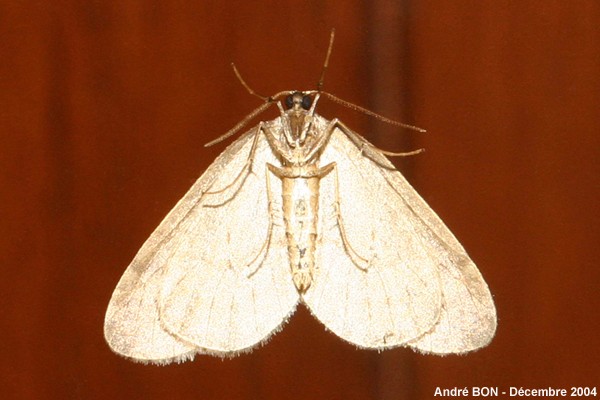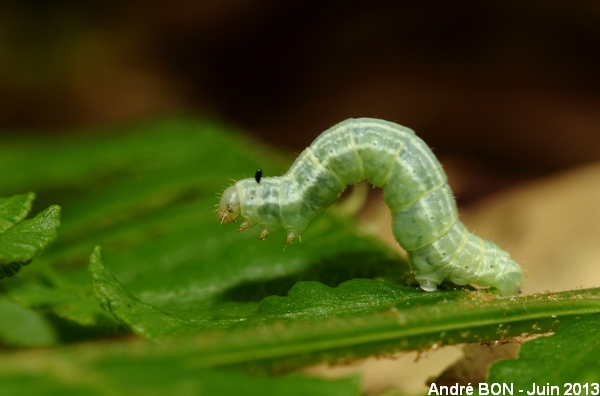





| Winter Moth (Operophtera brumata (Linnaeus, 1758)) |






|
|
Scientific name: Operophtera brumata (Linnaeus, 1758) Common name: Winter Moth French name: Phalène brumeuse, Cheimatobie hyémale, Phalène hyémale. Order: Lepidoptera Suborder: Heterocera Family: Geometridae Subfamily: Larentiinae Wingspan: 20-25 mm. Biotope: Woodlands, orchards, parks and gardens. Geographic area: Europe and Asia, it was accidentally introduced to the Maritime provinces of Canada. Flight time: November to February. Number of generations : 1 Caterpillar: Green with a darker dorsal line and paler lines on the sides. The head is dark. This is a typical geometrical caterpillar. Host plant: Poplars (P. deltoides x P. nigra), hornbeams, oaks, elms, maples or fruit trees. In case of overpopulation, caterpillars can destroy the whole foliage and lead to the death of the tree. |
The female has very short vestigial wings and cannot fly. The male has normally developed greyish wings. The Winter Moth lays the eggs in Autumn on tree trunks or branches under bark scales. Larvae hatch out in Spring and caterpillars can cause great damage to buds and foliage. In June, mature caterpillars make cocoons in the ground. Imagos fly from November to February (in Winter) et can survive at temperatures of -15°C. Winter Moths are attracted to light and come to windows. |
| [To know more about the Winter Moth] [Next picture] [Top] |

|
I identified this moth based on the date and on the general shape. Next year I will go to the other side of the window to get a confirmation. This Winter moth was attracted to the lights of the Christmas tree. I shot the picture through the window, using a strong flash light. The shutters are making the background colour. If moths could speak, this Winter Moth would tell that Santa Claus did empty the full glass of red wine that I am used to putting near the chimney every year. As I didn't see the moth on the next morning, I guess it went away by sledge. |
| [To know more about the Winter Moth] [Next picture] [Previous picture] [Top] |

|
Last year, the father of this Winter Moth attended Christmas Eve party. This one attends New Year's Eve dinner. |
| [To know more about the Winter Moth] [Next picture] [Previous picture] [Top] |

|
Here is one specimen with more contrasted colours. |
| [To know more about the Winter Moth] [Next picture] [Previous picture] [Top] |

|
I have observed this caterpillar on Common Bracken (Pteridium aquilinum) and I have first searched among species known to feed on this host plant. In fact it was just here on the move. Its host plants are the numerous Oaks of the forest. One parasite insect has laid one black egg on this caterpillar's body. Its development cycle may not reach the final stage. |
| [To know more about the Winter Moth] [Next picture] [Previous picture] [Top] |

|
Here is the female with its very short vestigial wings. It is much easier to see it on the wall of the house than on the bark of a tree, but is it a suitable place to lay its eggs? |
| [To know more about the Winter Moth] [Previous picture] [Top] |

|
Front view. |